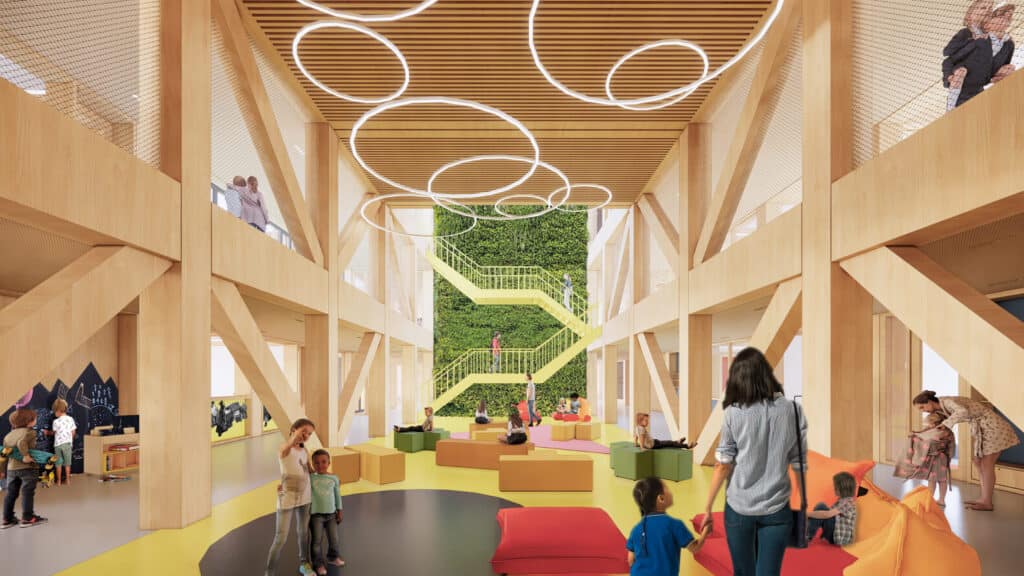Amsterdam has taken a significant step towards achieving full circularity by 2050 with the adoption of a modular system of construction for its new schools. The system has been designed by the Office for Metropolitan Architecture (OMA) and is part of the Circlewood consortium, an initiative aimed at constructing high-quality, flexible, and sustainable schools. The City of Amsterdam has selected this system to build multiple schools over the next decade as part of its Innovation Partnership School Buildings program.
As the project’s Creative Director, OMA has designed a system of standardized wooden columns and cross-laminated wooden floor panels connected by recycled steel joints. This creates a wooden structural framework that provides freedom in the disposition of partition walls and non-load-bearing structures, allowing interior spaces of different sizes and uses.

The partition walls are biobased and can sustain indoor climbing or vertical farming activities. The design and manufacturing process is digitally controlled to ensure fast assembly and disassembly using an electric crane on-site.
“With this system, the new schools that will be built in Amsterdam, and hopefully elsewhere in the Netherlands, can expand, downscale, or vary in configurations to respond to different needs over time. When a school closes, the building can be fully dismantled, and all the components become construction materials again,” according to Architect David Gianotten, OMA Managing Partner.
The modular construction system offers flexibility for schools to shape their learning environments, as the components are durable and adaptable. Additionally, this construction method is viewed as a pedagogical tool that can help students understand sustainability principles and the impact of humans on the environment.

Information screens installed in the schools will display the carbon footprint and resource consumption. The prefabrication system minimizes emissions during construction, biobased and carbon-absorbing materials are used throughout the school, and the building components can be fully reused to adhere to circularity principles.
The Innovation Partnership Program will enable emerging architectural practices to collaborate with OMA in creating individual schools. A pilot school in Amsterdam has been designed in collaboration with Studio A Kwadraat. The compact building aims to provide an integrated children’s centre beyond the traditional school program. Each façade addresses specific needs, incorporating canopies or bike-storage facilities. A central hall allows for structured and unstructured activities, while the school retains its adaptability, flexibility, and focus on the final user due to its “construction kit” building method.
The Circlewood consortium aims to construct up to thirty schools, contributing to the city’s goal of achieving full circularity by 2050. The construction method used by OMA is a significant step forward in sustainable and adaptable school construction, not just in Amsterdam but potentially throughout the Netherlands.

Amsterdam’s initiative underscores the pressing need for sustainable construction methods. With the OMA system, the city is reducing waste and carbon emissions and fostering a learning environment that underscores sustainability principles. As we move forward, it’s crucial that more centres follow Amsterdam’s lead, embracing innovative, adaptable construction methods that prioritise both functionality and sustainability. The next step? Encouraging other cities to embark on similar journeys towards full circularity and encouraging all of us to learn more about how we can reduce our impact on the environment. The future of construction is here, and it’s not just sustainable—it’s circular.






